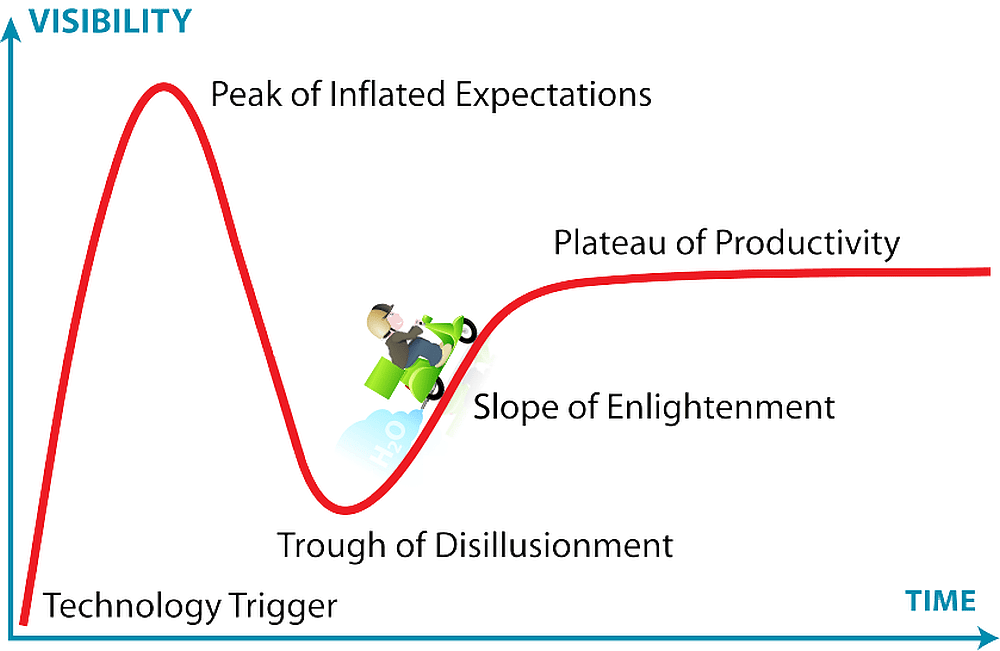
[Image above] A map by the United States Geological Survey showing the number of PFAS detected in tap water samples from select sites across the nation. Credit: United States Geological Survey
I have friends that joke about having coffee run through their veins because they consume so much of it each day. But what is not a joke is that virtually all people living in the United States have measurable amounts of toxic per- and polyfluoroalkyl substances (PFAS) in their blood.
PFAS are a large group of synthetic chemicals containing linked chains of carbon and fluorine. The strength of the carbon–fluorine bond makes it extremely unlikely that these chemicals will degrade naturally in the environment, hence their nickname “forever chemicals.”
The first PFAS were invented in the late 1930s, and these chemicals quickly gained widespread application in a variety of consumer products due to their ability to resist heat, grease, and water. Yet as PFAS became a staple in nonstick cookware and other appliances, studies showing the negative environmental and health effects of these chemicals began to grow as well, including reduced immune system functioning and increased risk for some cancers.
Industry concealed and downplayed the dangers of PFAS for decades until the truth finally started coming to light in the early 2000s thanks largely to U.S. environmental attorney Robert Bilott. Now, many U.S. states have passed laws regulating the presence of PFAS in consumer products. But these laws do not tackle the problem of PFAS that already exist in the environment.
The Vox video below explains how for decades industry and municipal water treatment plants allowed PFAS to leak into the nation’s waterways. As of July 2023, at least 45% of the nation’s tap water is estimated to have one or more types of PFAS, according to a report by the United States Geological Survey.

Credit: Vox, YouTube
Until this year, no federal regulations existed to address PFAS pollution. But on April 10, 2024, the U.S. Environmental Protection Agency (EPA) issued the first legally enforceable national drinking water standards for five common types of PFAS chemicals, as well as PFAS mixtures.
Under the new rule, drinking water concentrations of perfluorooctanoic acid (PFOA) and perfluorooctane sulfonate (PFOS), two of the most prevalent PFAS chemicals, will be capped at about 4 parts per trillion. This value is the lowest limit that the EPA believes is technologically possible, reflecting scientists’ understanding that there is no safe exposure level for them. Three other common PFAS will be limited to 10 parts per trillion, either measured on their own, in combination with each other, or with one otherwise unregulated chemical.
These compounds represent only a fraction of the entire class of PFAS, which is estimated to include between 4,700 chemicals (European Environment Agency) and 15,000 chemicals (EPA). But even these limited regulations will protect some 100 million people from exposure and prevent tens of thousands of serious illnesses, according to the EPA.
“We are one huge step closer to shutting off the tap for forever chemicals once and for all,” EPA administrator Michael Regan told reporters on Tuesday, April 9, ahead of the official agency release.
PBS NewsHour recently did a segment on what the new standards mean for U.S. drinking water. One takeaway is that water treatment plants will need to be upgraded to remove PFAS from the water.
Ceramics may play a role in these upgrades. Recent studies have shown that some ceramic materials degrade certain PFAS quite well under ultraviolet light, as explained in a July 2020 CTT.
Considering the new regulations now in place, there are “fresh opportunities for materials design and for the re-evaluation of other wide band gap semiconductors for PFAS photocatalytic degradation,” writes Bo Wang, recently graduated Ph.D. student from Rice University, in his thesis on boron-nitride-based photocatalysts.
Author
Lisa McDonald
CTT Categories
- Environment
- Market Insights


